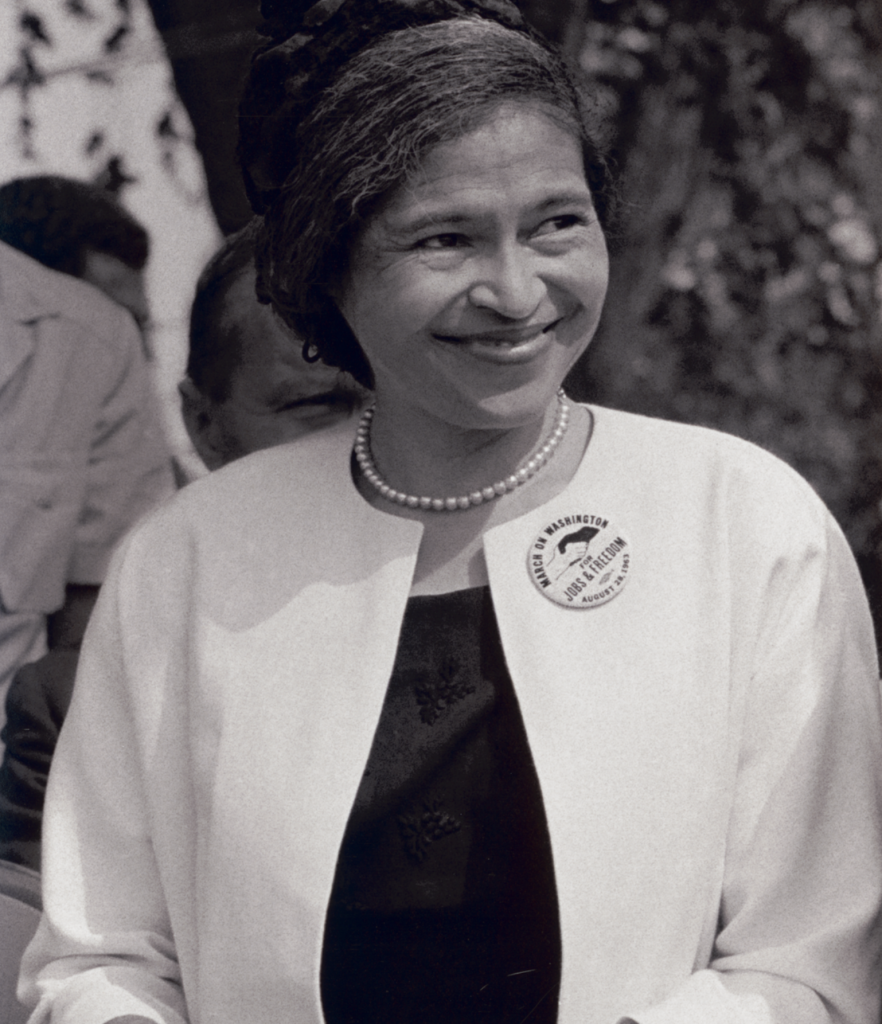{mediaObjectId:'98FB4C1EEECB017CE0538C93F116017C',playerSize:'mediumStandard'}
Some portions of this story were published in an earlier post.
Protests over police brutality targeting African Americans have swept the country since the May 25 death of George Floyd at the hands of officers in Minneapolis. It’s a subject that Rosa Parks knew well. Her lifelong campaign against police brutality and other forms of discrimination eventually made her one of the most revered Americans of the 20th century.
Her life and papers are chronicled at the Library and featured in the current exhibit, “Rosa Parks: In Her Own Words.” You can explore it online, even while the Library is currently closed due to COVID-19. It is, particularly during these turbulent weeks, an inspiration.
The Parks papers and exhibit are part of the Library’s role in preserving and presenting the lives of any number of American revolutionary changemakers. Another current exhibit, “Shall Not Be Denied: Women Fight for the Vote,” chronicles the role of suffragists such as Susan B. Anthony, Elizabeth Cady Stanton, Mary Church Terrell and thousands of others who organized, marched and protested for the right of women to vote — something we take as a matter of course today.
The online Changemakers series showcases other social justice collections. These include “The Civil Rights Act of 1964: A Long Struggle for Freedom,” “A Day Like No Other: Commemorating the 50th Anniversary of the March on Washington,” and “Art in Action: Herblock and Fellow Artists Respond to the Their Times.” among other projects documenting work by Ansel Adams, Margaret Mead and Arthur Szyk.
Parks was born on Feb. 4, 1913, under bitter Jim Crow segregation in Tuskegee, Alabama. She endured the threat of Klan violence as a child, helped her husband, Raymond, with his work defending the Scottsboro Boys, then joined the NAACP as a secretary and activist. By the 1940s, she was helping the NAACP document false arrests, beatings and sham trials that led to at least one state-sanctioned executions. Her papers reveal an eloquent, bitter recognition of the humiliations that white supremacy imposed.
“Treading the tight-rope of Jim Crow from birth to death, from almost our first knowledge of life to our last conscious thought, from the cradle to the grave is a major mental acrobatic feat,” she writes in one undated note. “To me, it seems that we are puppets on strings in the white man’s hands. They say we must be segregated from them by the color line, yet they pull the strings and we perform to their satisfaction or suffer the consequence if we get out of line.”
Her unplanned bus protest on Dec. 1, 1955 — she refused to give up her seat to a white man — cost Parks and her husband their jobs, subjected them to a decade of poverty, death threats and stress-related illnesses that never fully abated. She never wavered. She moved to Detroit, eventually finding steady work in U.S. Rep. John Conyers’ office. For the rest of her life, she worked with causes such as labor unions, radical black nationalist groups and anti-poverty agencies.
In 1990, when she was in her late 70s, Nelson Mandela stopped in Detroit after being released from prison in South Africa. As historian Douglas Brinkley described it in “Rosa Parks: A Life,” Mandela spotted her in the receiving line as soon as he stepped off the plane: “Tears filled his eyes … in a low, melodious tone, Nelson Mandela began to chant, ‘Ro-sa Parks. Ro-sa Parks. Ro-sa Parks,’ until his voice crescendoed into a rapturous shout: ‘Ro-sa Parks!’ ’’
In 1999, she was given the Congressional Gold Medal, the highest honor Congress can bestow. Schools, libraries and streets were named for her. There’s now a statue of her in the Capitol Building. In 2010, Time Magazine named her as one of the world’s “25 Most Powerful Women of the Past Century.”
It was an amazing life and is told by her with unfiltered honesty — in her own hand — in the Library’s collection.
Parks at the March on Washington, Aug., 1963. Photo: Bob Adelman. Prints and Photographs Division.
Subscribe to the blog— it’s free! — and the largest library in world history will send cool stories straight to your inbox.

















